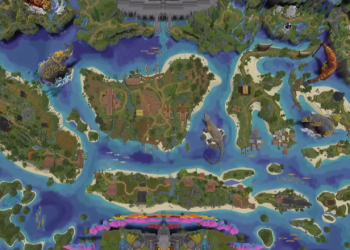Jakarta, Indonesia Sentinel — Flores, an island in eastern Indonesia’s East Nusa Tenggara province, has long been considered the home of the dwarves, a diminutive ancient humans known as the “Hobbit.” But new research is shifting scientists’ attention to the nearby island of Sulawesi, which may hold traces of an even earlier human migration.
A recent study indicates that early humans may have settled in Sulawesi as far back as 1.5 million years ago. The findings raise the possibility that Homo floresiensis, the Hobbit species discovered on Flores may have originated from Sulawesi rather than arriving directly from mainland Southeast Asia.
The remains of Homo floresiensis were first found in Flores, while another small-bodied human species, Homo luzonensis, was unearthed on Luzon Island in the Philippines. There’s a long-standing theory that Pleistocene-era humans voyaged across the Wallacea region — a unique biogeographic zone separating Asia and Australia.
The dominant hypothesis has been that Homo floresiensis descended from Homo erectus, shrinking in size through a process known as “island dwarfism” after becoming isolated on Flores.
But a research team led by Dr. Adam Brumm of Griffith University, working with Indonesian archaeologist Budianto Hakim, has spent decades searching for evidence that these small-bodied humans may have lived on Sulawesi before reaching Flores.
Their excavation in a cornfield in South Sulawesi uncovered seven stone tools made from chert. Published in the journal Nature, the study dated the artifacts using sediment analysis and fossilized pig jawbones found nearby to between 1.04 million and 1.48 million years old.
These artifacts are older than the earliest known tools on Flores, which date to about 1.02 million years ago. This suggests early humans may have first stopped in Sulawesi before making the hundreds-of-kilometers journey south to Flores.
“I think we’ve got another piece of the puzzle here that does make it somewhat more likely that Sulawesi was the point of origin of these early humans on Flores,” Brumm told, as reported by IFL Science.
Read Also:
The Mystery of Orang Pendek: Indonesia’s ‘Hobbit’ Inhabited the Sumatran Land
Still, without direct human fossils from Sulawesi, researchers cannot confirm who made the tools. How these early humans reached Sulawesi also remains unclear and add another mysteries to solve.
Brumm doubts they possessed the cognitive skills to build seaworthy boats or plan complex voyages, suggesting instead that their crossing might have been accidental, similar to how rats or monkeys have spread naturally across islands.
While the discovery adds an important chapter to Southeast Asia’s human migration story, many mysteries remain with a lot of questions left unanswered.
(Raidi/Agung)

























